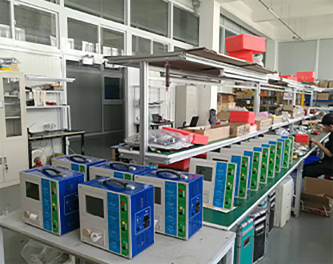 English
English



-
 Afrikaans
Afrikaans -
 Albanian
Albanian -
 Amharic
Amharic -
 Arabic
Arabic -
 Armenian
Armenian -
 Azerbaijani
Azerbaijani -
 Basque
Basque -
 Belarusian
Belarusian -
 Bengali
Bengali -
 Bosnian
Bosnian -
 Bulgarian
Bulgarian -
 Catalan
Catalan -
 Cebuano
Cebuano -
 China
China -
 China (Taiwan)
China (Taiwan) -
 Corsican
Corsican -
 Croatian
Croatian -
 Czech
Czech -
 Danish
Danish -
 Dutch
Dutch -
 English
English -
 Esperanto
Esperanto -
 Estonian
Estonian -
 Finnish
Finnish -
 French
French -
 Frisian
Frisian -
 Galician
Galician -
 Georgian
Georgian -
 German
German -
 Greek
Greek -
 Gujarati
Gujarati -
 Haitian Creole
Haitian Creole -
 hausa
hausa -
 hawaiian
hawaiian -
 Hebrew
Hebrew -
 Hindi
Hindi -
 Miao
Miao -
 Hungarian
Hungarian -
 Icelandic
Icelandic -
 igbo
igbo -
 Indonesian
Indonesian -
 irish
irish -
 Italian
Italian -
 Japanese
Japanese -
 Javanese
Javanese -
 Kannada
Kannada -
 kazakh
kazakh -
 Khmer
Khmer -
 Rwandese
Rwandese -
 Korean
Korean -
 Kurdish
Kurdish -
 Kyrgyz
Kyrgyz -
 Lao
Lao -
 Latin
Latin -
 Latvian
Latvian -
 Lithuanian
Lithuanian -
 Luxembourgish
Luxembourgish -
 Macedonian
Macedonian -
 Malgashi
Malgashi -
 Malay
Malay -
 Malayalam
Malayalam -
 Maltese
Maltese -
 Maori
Maori -
 Marathi
Marathi -
 Mongolian
Mongolian -
 Myanmar
Myanmar -
 Nepali
Nepali -
 Norwegian
Norwegian -
 Norwegian
Norwegian -
 Occitan
Occitan -
 Pashto
Pashto -
 Persian
Persian -
 Polish
Polish -
 Portuguese
Portuguese -
 Punjabi
Punjabi -
 Romanian
Romanian -
 Russian
Russian -
 Samoan
Samoan -
 Scottish Gaelic
Scottish Gaelic -
 Serbian
Serbian -
 Sesotho
Sesotho -
 Shona
Shona -
 Sindhi
Sindhi -
 Sinhala
Sinhala -
 Slovak
Slovak -
 Slovenian
Slovenian -
 Somali
Somali -
 Spanish
Spanish -
 Sundanese
Sundanese -
 Swahili
Swahili -
 Swedish
Swedish -
 Tagalog
Tagalog -
 Tajik
Tajik -
 Tamil
Tamil -
 Tatar
Tatar -
 Telugu
Telugu -
 Thai
Thai -
 Turkish
Turkish -
 Turkmen
Turkmen -
 Ukrainian
Ukrainian -
 Urdu
Urdu -
 Uighur
Uighur -
 Uzbek
Uzbek -
 Vietnamese
Vietnamese -
 Welsh
Welsh -
 Bantu
Bantu -
 Yiddish
Yiddish -
 Yoruba
Yoruba -
 Zulu
Zulu
Closed Cup Flash Point Testing Methodology and Applications in Safety Evaluation
Understanding the Flash Point Closed Cup Test
The flash point closed cup test is a critical procedure in the field of materials safety and chemical analysis. This test determines the lowest temperature at which vapors of a volatile substance can ignite when exposed to an ignition source under specific conditions. Understanding the flash point is vital for evaluating the flammability and hazard risk associated with various materials, particularly in industries such as petrochemicals, paints, solvents, and pharmaceuticals.
In the closed cup method, a sample of the material is placed in a sealed container. The testing apparatus is designed to allow for minimal exposure to the atmosphere to prevent evaporation or contamination, which could skew the results. The temperature of the sample is gradually increased, and an ignition source, often a small flame or an electrical spark, is introduced at intervals. The flash point is defined as the lowest temperature at which the vapors above the liquid ignite momentarily and produce a flash.
One of the primary advantages of the closed cup method is its ability to provide a more controlled environment compared to open cup tests. Because the sample is sealed, volatile compounds cannot easily escape, ensuring accurate readings of the vapors' concentration. Moreover, this method is often more applicable in regulatory settings where safety and compliance are paramount.
flash point closed cup test

Different standards and methods exist for conducting the flash point closed cup test, with the most common being the Pensky-Martens closed cup test and the Tag closed cup test
. The Pensky-Martens method is frequently used for substances that require precise measurements, while the Tag method is suitable for lighter materials and is considered less sensitive. Each method has its specific temperature ranges and testing protocols, which must be adhered to in order to guarantee reliability and reproducibility of results.The flash point is not only a regulatory requirement for hazardous materials but also serves as a fundamental parameter in product formulation and safety data sheets (SDS). Knowing the flash point allows manufacturers to design safer facilities, create proper storage conditions, and ensure compliance with fire safety regulations. Furthermore, it aids in risk assessment and emergency planning, particularly for industries that handle flammable substances.
Interpreting the results of the flash point closed cup test is crucial for end users. A low flash point indicates a higher risk of ignition at lower temperatures, necessitating stringent safety measures during production, transportation, and storage. Conversely, a higher flash point may suggest a safer profile, though it does not eliminate the necessity for careful handling and respect for associated risks.
In conclusion, the flash point closed cup test plays an essential role in ensuring materials' safety and compliance in diverse industries. By accurately determining the ignition risk of volatile substances, this test fosters a safer working environment and aids in preventing accidents related to flammable materials. As regulations continue to evolve, understanding and applying the results of flash point tests will remain an indispensable aspect of chemical safety management. Manufacturers, chemists, and safety professionals alike must prioritize these assessments to mitigate risks and protect both workers and the environment from the dangers posed by flammable substances.
-
Testing Equipment Industry Sees Major Advancements in 2025: Smart & Precision Technologies Lead the WayNewsJun.06,2025
-
Applications of Direct Current Generators in Renewable Energy SystemsNewsJun.05,2025
-
Hipot Tester Calibration and Accuracy GuidelinesNewsJun.05,2025
-
Digital Circuit Breaker Analyzer Features and BenefitsNewsJun.05,2025
-
Benefits of Real-Time Power Quality Monitoring Devices for Industrial EfficiencyNewsJun.05,2025
-
Earth Fault Loop Testing in High-Rise Building Electrical SystemsNewsJun.05,2025



